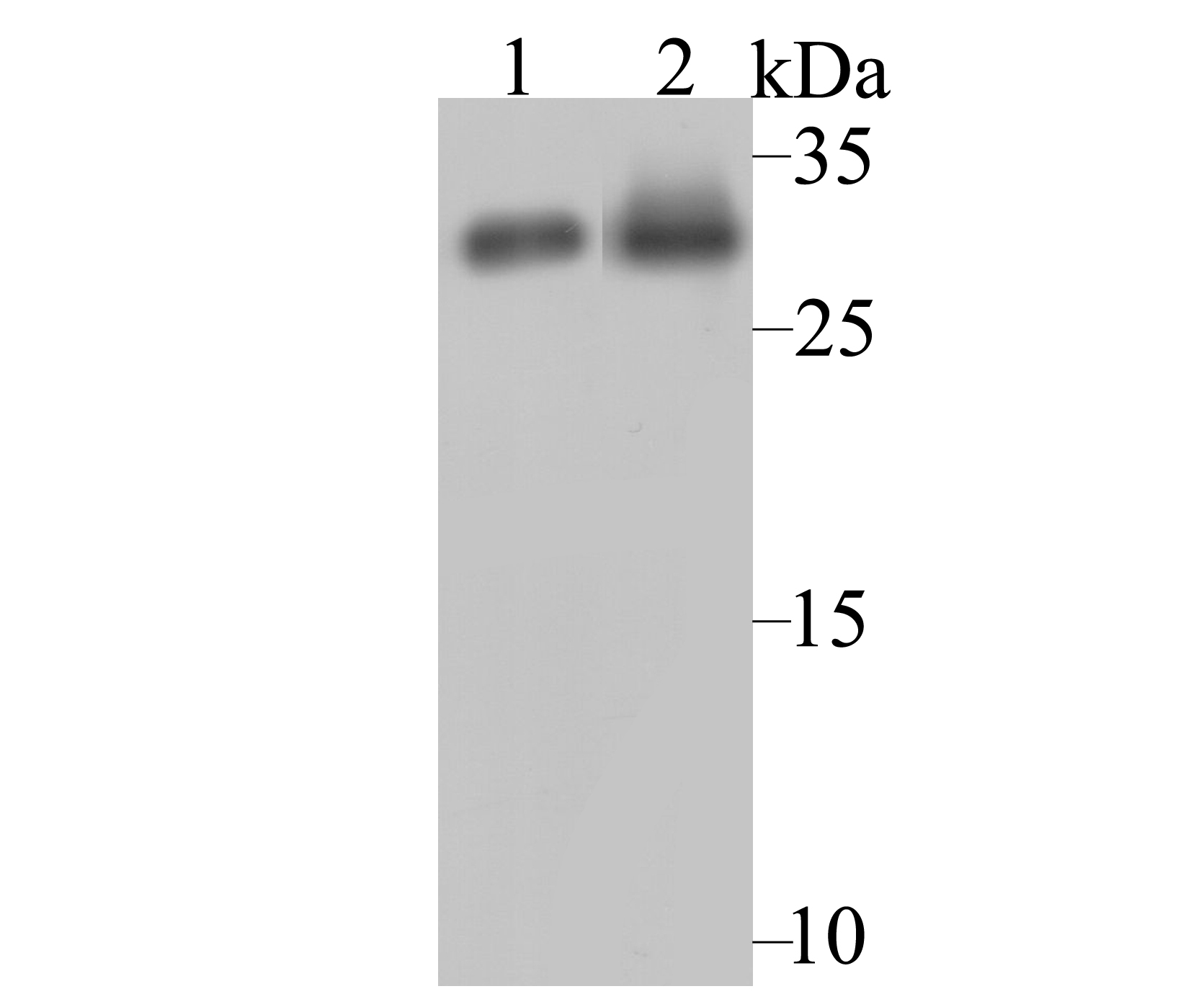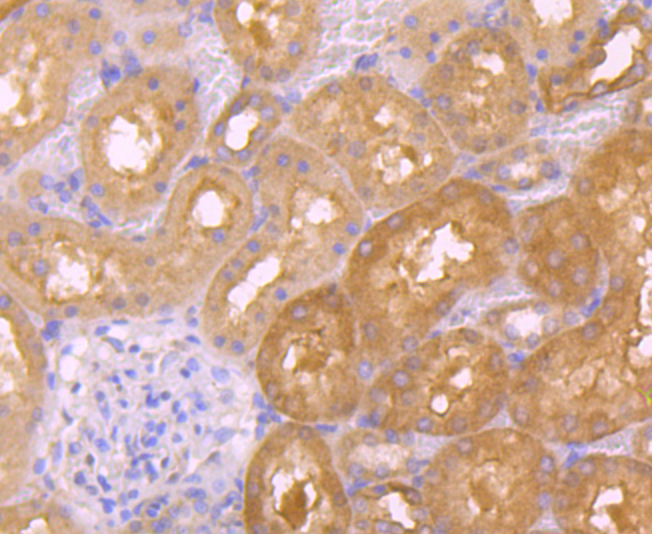Product Name :
NQO1 polyclonal antibody Background :
NQO1, a 274 amino acid protein, is ubiquitously expressed, but the expression level varies among tissues. NQO1 gene expression is coordinately induced in response to xenobiotics, antioxidants, heavy metals and radiation. The antioxidant response element (ARE) in the NQO1 gene promoter is essential for expression and coordinated induction of NQO1. ARE activation by tert-butylhydroquinone is dependent on PI3-kinase, which lies upstream of Nrf2. Nrf2, c-Jun, Nrf1, Jun-B and Jun-D bind to the ARE and regulate expression and induction of NQO1 gene. Maf-Maf homodimers and possibly Maf-Nrf2 heterodimers play a role in negative regulation of ARE-mediated transcription, but Maf-Nrf1 heterodimers fail to bind with the NQO1 gene ARE and do not repress NQO1 transcription. Product :
Rabbit IgG, 1mg/ml in PBS with 0.02% sodium azide, 50% glycerol, pH7.2 Storage&Stability :
Store at +4°C after thawing. Aliquot store at -20°C. Avoid repeated freeze / thaw cycles. Specificity :
NQO1 polyclonal antibody detects endogenous levels of NQO1 protein. Immunogen :
Recombinant protein within human NQO1 1-250 aa. Conjugate :
Unconjugated Modification :
Unmodification
NQO1 polyclonal antibody Background :
NQO1, a 274 amino acid protein, is ubiquitously expressed, but the expression level varies among tissues. NQO1 gene expression is coordinately induced in response to xenobiotics, antioxidants, heavy metals and radiation. The antioxidant response element (ARE) in the NQO1 gene promoter is essential for expression and coordinated induction of NQO1. ARE activation by tert-butylhydroquinone is dependent on PI3-kinase, which lies upstream of Nrf2. Nrf2, c-Jun, Nrf1, Jun-B and Jun-D bind to the ARE and regulate expression and induction of NQO1 gene. Maf-Maf homodimers and possibly Maf-Nrf2 heterodimers play a role in negative regulation of ARE-mediated transcription, but Maf-Nrf1 heterodimers fail to bind with the NQO1 gene ARE and do not repress NQO1 transcription. Product :
Rabbit IgG, 1mg/ml in PBS with 0.02% sodium azide, 50% glycerol, pH7.2 Storage&Stability :
Store at +4°C after thawing. Aliquot store at -20°C. Avoid repeated freeze / thaw cycles. Specificity :
NQO1 polyclonal antibody detects endogenous levels of NQO1 protein. Immunogen :
Recombinant protein within human NQO1 1-250 aa. Conjugate :
Unconjugated Modification :
Unmodification
-
 Western blot analysis of NQO1 on different cell lysates using anti-NQO1 antibody at 1/1,000 dilution. Positive control: Lane1: Siha Lane2: A549
Western blot analysis of NQO1 on different cell lysates using anti-NQO1 antibody at 1/1,000 dilution. Positive control: Lane1: Siha Lane2: A549 -
 Immunohistochemical analysis of paraffin-embedded rat kidney tissue using anti-NQO1 antibody. Counter stained with hematoxylin.
Immunohistochemical analysis of paraffin-embedded rat kidney tissue using anti-NQO1 antibody. Counter stained with hematoxylin.
Tannic acid attenuates hepatic oxidative stress, apoptosis and inflammation by activating the Keap1‑Nrf2/ARE signaling pathway in arsenic trioxide‑toxicated rats
PMCID: Pubmed No.:33000240
Activated AMP-activated protein kinase prevents hepatic steatosis, oxidative stress and inflammation in primary chicken hepatocytes
PMCID: Pubmed No.:36160867
Bioworld Biotech only provide peptides for our antibodies and do not provide additional peptide customization services.
Price/Size :
USD 368/1mg/vial
Tips:
For phospho antibody, we provide phospho peptide(0.5mg) and non-phospho peptide(0.5mg).Describe :
Blocking peptides are peptides that bind specifically to the target antibody and block antibody binding. These peptide usually contains the epitope recognized by the antibody. Antibodies bound to the blocking peptide no longer bind to the epitope on the target protein. This mechanism is useful when non-specific binding is an issue, for example, in Western blotting (WB) and Immunohistochemistry (IHC). By comparing the staining from the blocked antibody versus the antibody alone, one can see which staining is specific; Specific binding will be absent from the western blot or IHC performed with the neutralized antibody.Formula:
Synthetic peptide was lyophilized with 100% acetonitrile and is supplied as a powder. Reconstitute with 0.1 ml DI water for a final concentration of 10 mg/ml.The purity is >90%,tested by HPLC and MS.
Storage:
The freeze-dried powder is more stable. For short time at 2-8°C. For long term storage store at -20°C.
Note :
This product is for research use only (RUO only). Not for use in diagnostic or therapeutic procedures.
 NQO1 polyclonal antibody
NQO1 polyclonal antibody  Datasheet
Datasheet COA
COA MSDS
MSDS SHIP
SHIP